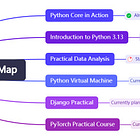KNN (Part 2): How to Recognize Handwritten Digits?(Practical Data Analysis 19)
Learn how to classify handwritten digits using KNN in Python's sklearn. Compare KNN, SVM, Naive Bayes, and Decision Tree for accuracy and performance.
Welcome to the "Practical Data Analysis" Series.
Today, I'll guide you through a hands-on practice with KNN.
In the previous lesson, I explained that KNN essentially calculates the distance between the object to be classified and other objects. Then, based on the classifications of the nearest KK neighbors, it determines the classification of the object.
In this lesson, we’ll first look at how to use the KNN algorithm in sklearn, and then practice with the built-in handwritten digit dataset in sklearn.
Previously, I also covered SVM, Naive Bayes, and Decision Tree classifiers. We can also use this dataset to train these classifiers and compare their results.
How to Use KNN in sklearn
The sklearn package in Python includes the KNN algorithm. KNN can be used for both classification and regression. For classification, you’ll need to import:
from sklearn.neighbors import KNeighborsClassifier
For regression, you’ll need to import:
from sklearn.neighbors import KNeighborsRegressor
From the names, you can tell that Classifier is for classification, and Regressor is for regression.
Generally, if an algorithm has a Classifier class, you can also find a corresponding Regressor class.
For example, in decision tree classification, you can use DecisionTreeClassifier, and for regression, you can use DecisionTreeRegressor.
Now, let’s see how to create a KNN classifier in sklearn.






